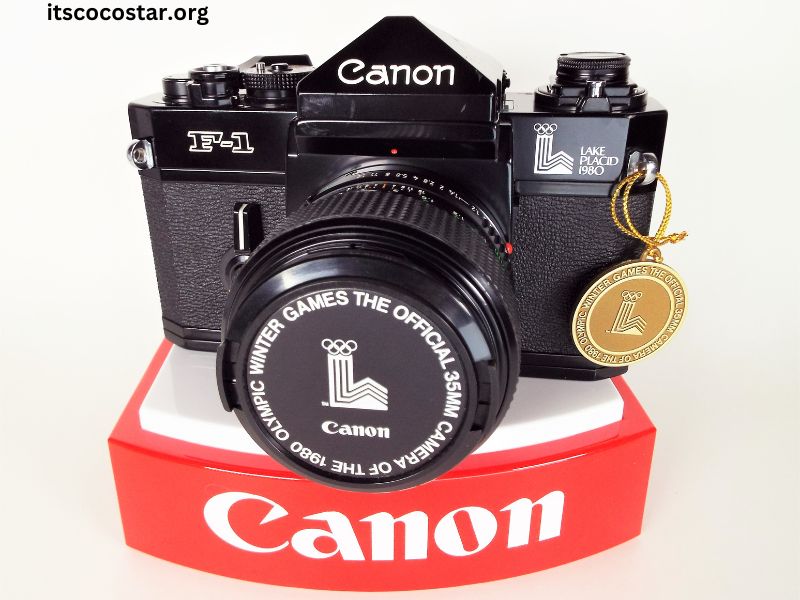The 1980 Winter Olympic Games, held in Lake Placid, New York, marked a pivotal moment in the history of winter sports and broadcasting. For the first time, the world witnessed an Olympic event captured with an innovative camera technology that would set new standards for sports broadcasting. This article explores the official camera of the 1980 Winter Olympics, its significance, and its impact on the future of sports media.
The Setting: Lake Placid 1980
The 1980 Winter Olympic Games took place from February 13 to February 24, 1980, in the small village of Lake Placid, New York. This was the second time Lake Placid hosted the Winter Olympics, the first being in 1932. The games were notable not only for the athletic performances but also for the technological advancements in sports broadcasting.
The Official Camera: The Sony Portapak
For the 1980 Winter Olympics, the official camera was the Sony Portapak, a groundbreaking piece of technology that revolutionized the way sports events were filmed and broadcasted. Introduced in the mid-1970s, the Portapak was one of the first portable video recording systems that allowed broadcasters to capture high-quality footage on location without the need for bulky equipment.
Features and Specifications
The Sony Portapak system consisted of a camera unit and a separate video tape recorder (VTR). The camera itself was compact, making it easier to handle and maneuver compared to traditional studio cameras. It featured a 1/2-inch video tape format, which was a significant improvement over earlier reel-to-reel systems. This format allowed for better image quality and more reliable recording.
The Portapak camera was equipped with a 12x zoom lens, providing flexibility in capturing both wide-angle and close-up shots. The VTR was designed to be carried by a camera operator, and its portability made it ideal for capturing dynamic and fast-paced sports events. The system also featured a built-in microphone for capturing audio, which was essential for live broadcasts and interviews.
Impact on Broadcasting
The introduction of the Sony Portapak at the 1980 Winter Olympics was a game-changer for sports broadcasting. Prior to this, broadcasters relied on large, stationary cameras that were often limited in their ability to capture the action from different angles. The Portapak’s portability allowed for more dynamic and versatile filming, providing viewers with a more immersive experience.
The use of the Portapak also enabled broadcasters to capture footage from previously inaccessible locations, such as the snowy slopes and ice rinks of Lake Placid. This enhanced coverage of the games and provided a more comprehensive view of the athletes’ performances. The ability to move the camera freely and capture close-up shots added a new dimension to sports broadcasting, making the viewing experience more engaging and exciting.
The 1980 Winter Olympics: Memorable Moments
The 1980 Winter Olympics were memorable for several reasons, including the famous “Miracle on Ice,” where the U.S. hockey team defeated the Soviet Union in a stunning upset. The Portapak camera played a crucial role in capturing these historic moments, allowing viewers around the world to experience the excitement and drama of the games.
Other notable events included the impressive performances of athletes like Eric Heiden, who won five gold medals in speed skating, and the emotional triumph of skater Dorothy Hamill. The Portapak’s ability to capture high-quality footage of these events contributed to the overall impact and legacy of the 1980 Winter Olympics.
Legacy and Technological Advancements
The success of the Sony Portapak at the 1980 Winter Olympics marked a turning point in sports broadcasting technology. Its portability and versatility set new standards for the industry, leading to further advancements in camera technology and production techniques.
In the years following the 1980 Winter Olympics, the Portapak’s influence can be seen in the development of more advanced portable cameras and recording systems. The principles of mobility and flexibility that defined the Portapak were incorporated into subsequent generations of broadcast equipment, shaping the way sports events are captured and presented.
Today’s sports broadcasts continue to benefit from the innovations introduced by the Portapak. Modern cameras are even more advanced, with features like high-definition video, wireless transmission, and enhanced image stabilization. However, the legacy of the Portapak remains a testament to the ongoing evolution of sports broadcasting technology.
Conclusion
The Sony Portapak, as the official camera of the 1980 Winter Olympic Games, played a pivotal role in transforming the landscape of sports broadcasting. Its portability, high-quality footage, and ability to capture dynamic and exciting moments set new standards for the industry and paved the way for future advancements. The 1980 Winter Olympics were a showcase of athletic excellence and technological innovation, and the Portapak’s contribution to this historic event remains a significant chapter in the history of sports media.






